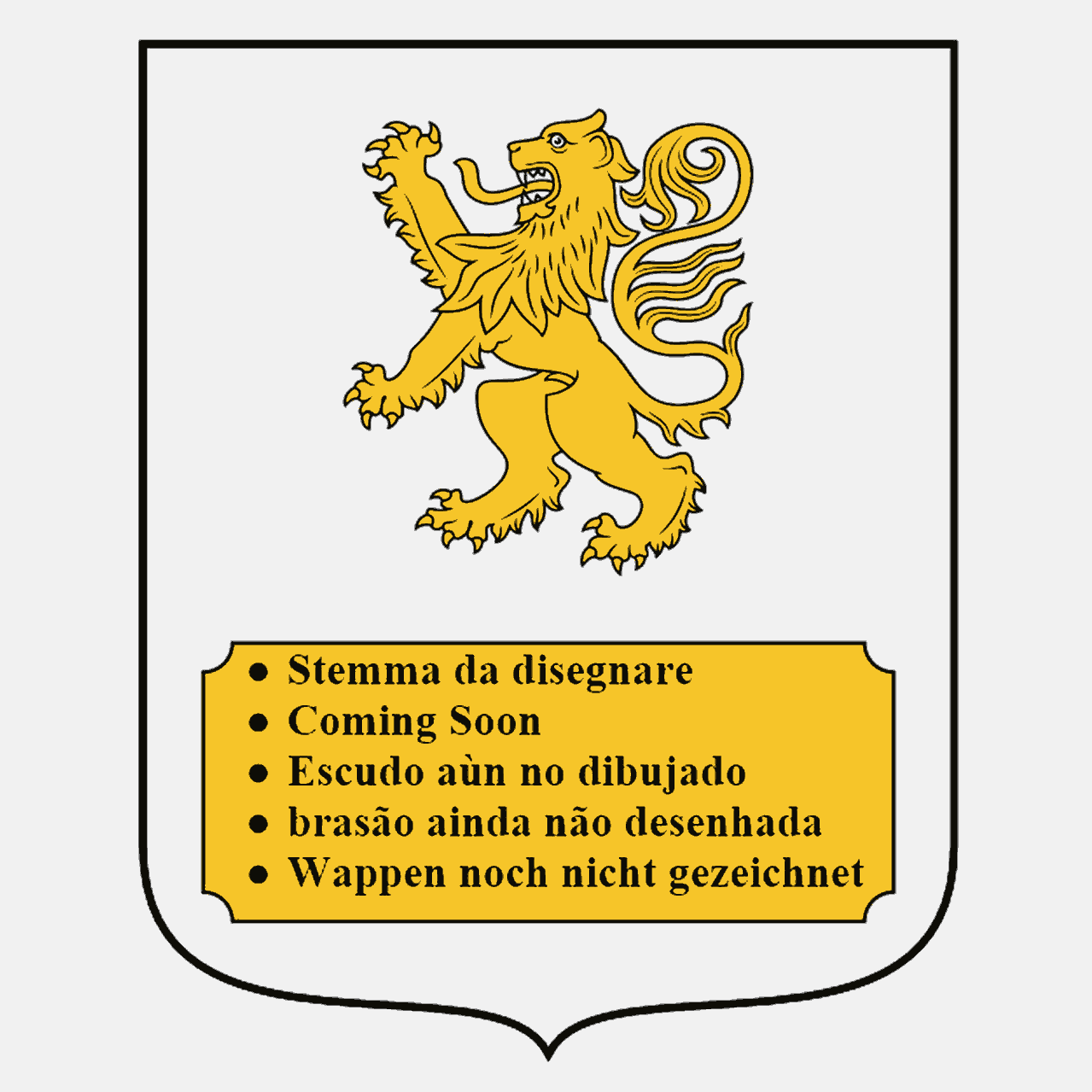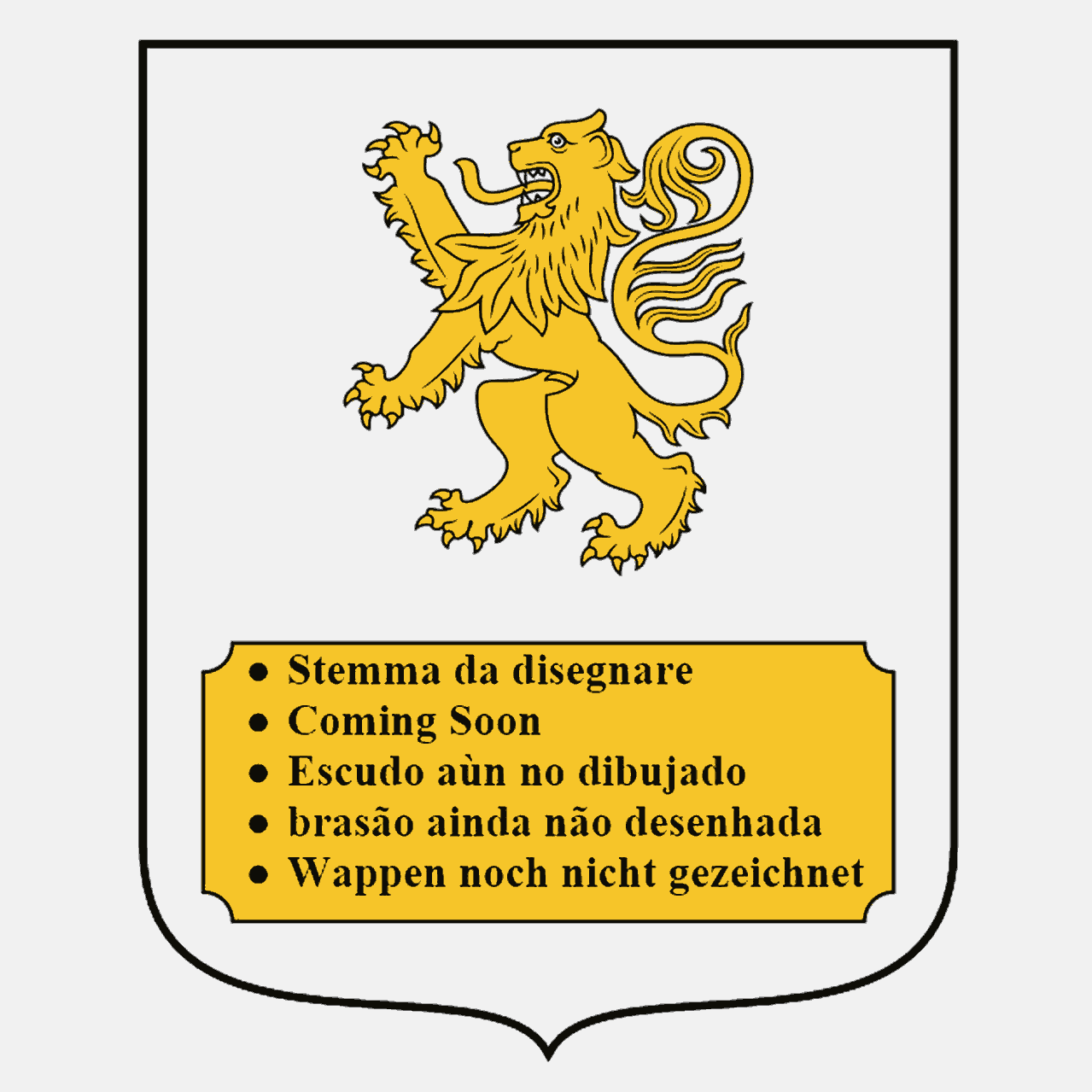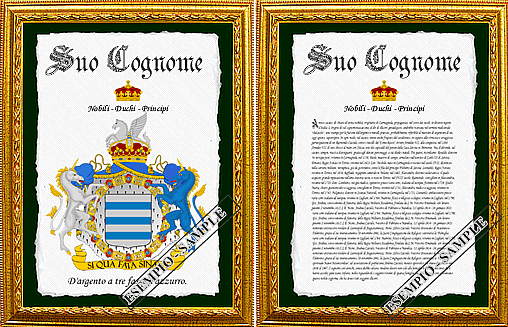

Notice:
A Heraldic Traces is a dossier prepared by an artificial intelligence program useful as a starting point for researchers and passionate heraldists. The presence of a Heraldic Traces indicates that there is information to draft a heraldic document after carrying out a professional thorough search.
You may be interested
Canelles is typically Sardinian, it is an ancient Catalan family of medieval origin who settled in Sardinia in the 14th century following the armies of Alfonso D'Aragona. additions provided by Matteo Fanni Canelles The Canelles family known in the Middle Ages as Canyelles according to the Catalan idiom, settled in Sardinia from 1326 and is probably together with the Aymerich family of Iberian origin, which resides for the longest time in the whole island. The Canyelles, according to the family tradition and studies of genealogists of the '600, are brought back to the royal line of the Counts of Toulouse and Barcelona. However, today's historians, due to the lack of direct sources and genealogical inconsistencies, do not share this version, to support the thesis of a mercantile origin. The name Canyelles - Canellas - Canelles is however present in Catalonia well before 1326 as is shown by several documents preserved in Spain. Although the first traces can be traced back to 992, when the castle of Canyelles in the north-east of Spain is cited, the current Spanish literature includes numerous characters historically lived between the 12th and 14th centuries linked to the name Canyelles, Canellas, Canelles (ie according to the main Catalan, Aragonese and Castilian idiomatic variants). In 1147 King Raimondo Berengario IV commissioned Dalmau de Canyelles to deal with the reconquest of Calaceite; in 1205 the Calatrava order gave Dalmacio de Canyelles the Castle of Lledo in the same territory as Calaceite. In 1235 we find a valiant Pedro Canellas knight of the Crown of Aragon who participated in the conquest of Majorca and Valencia and obtained from King Jaime I, special privileges including the legacy of the Villa de Algemesi. The most famous character is certainly Vidal de Canyelles (also known as Vidal de Canellas- de Canelles) jurist and bishop of Huesca, he was a great confidant and relative of King Jaime I of Aragon (of the Counts of Barcelona dynasty) and friend and collaborator by Raimondo di Penafort. In 1247, Vidal gave his court (Curia) a great authority in the region of his jurisdiction. After graduating from the University of Bologna in 1221, he wrote important treatises on law such as the Vidal Maior which, due to the highly democratic content of its principles, was opposed by the nobility of the time, so much so that only the minor compilation was considered official in the kingdom. The family tradition has it that the family descends from Beltran de Canyelles great-grandson of Bishop Vidal and son of Elvira Zapata who became a Knight of the Crown of Aragon. In 1315, he was commissioned by the king to go to Sardinia and explore the territory to evaluate the easiest place for a possible landing and conquer the island. The bay used in the landing of 1323 by the Aragonese troops, was called the Canyelles port for some decades. Lacking sources in Sardinia dating back to the time narrated (X-XIII century), the family tradition of the Canelles must be considered a legend: there are no documents to date that testify agreements between the King of Aragon and Bertran (or Beltran) de Canyelles and that he actually arrived in Sardinia; we have no documents that testify kinship ties between Bertran (who had several children) and the Canyelles actually present in Cagliari at that time. However, in Spanish literature between the thirteenth and fourteenth centuries, we find a knight Bertran Canelles with a heraldic coat of arms similar to that of the Sardinian Canyelles (until the sixteenth century) with three green leaves in a silver field inserted inside the shield. ; in 1381, that is to say after the first Canyelles appearing in Sardinia, we find Jaime Canellas Juror of Palma (Canary Islands) descendant of Ramon Canellas knight who participated in the conquest of the Balearic Islands with a coat of arms similar to the Sardinian one. In the fourteenth and sixteenth centuries in Spain, we find several Antonio Canyelles who gave another branch of the family in Spain (coat of arms depicting a bunch of canes). The degree of kinship of these characters between them and these with the family group that appears in Sardinia in the first half of the fourteenth century is not easily reconstructed due to the small number of documents available today, but, based on the description of the emblem it is likely a family ties between the Balearic and Sardinian families. Surely the Sardelles Canyelles belonged to a family well rooted in the Catalan social context if as many as three characters related to each other moved permanently to Cagliari as early as 1326: Pedro (XIII century -1336) Jaime and Guillermo. Presumably they belonged to a cadet branch of the family who moved to the island to develop commercial traffic with the relatives of Barcelona and the Balearics. The settlement on the island was not improvised and it is likely that the Canyelles participated (although not militarily) in the Catalan-Aragonese landing of 1323; in fact, the family immediately succeeded in settling in the Catalan oligarchy; we find the same Pedro appointed assayer of the Mint of Iglesias and Guillermo nominated in 1360 prohombre of the city of Cagliari. In 1477, Pedro Canyelles, at the end of the Catalan-Aragonese kingdom similarly to other illustrious families of Sardinia, asked the king and obtained it, the bestowal of generosity, a noble title recognized only to families of ancient and illustrious lineage.
Buy a heraldic document with your coat of arms
It is possible to do a preliminary research in our archive. About 100,000 heraldic traces, origins of surnames, coat of arms and blazons are available free of charge. Just write the desired last name in the form below and press enter.
Verba Volant, Scripta Manent
